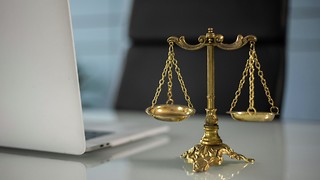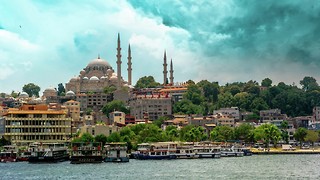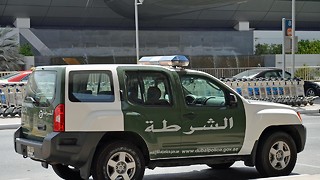Games of pain and power
Today’s torture is as systematic as that used on Guy Fawkes
The strappado is a torture technique, which was popularised during the Roman Inquisition in the C16. It involves suspending someone from the ceiling of a room by their wrists, dislocating the shoulders of the victim in a particularly painful way and often causing death through asphyxiation or circulation failure. In 1605 it was used on Guy Fawkes in the Tower of London under special orders from James I. In 2002 the same technique was used on British resident Binyam Mohamed while being tortured by the American secret services in the bowels of our increasingly embarrassing ally, Pakistan. They told him that “the law has been changed, there are no lawyers” before suspending him from a leather strap for a week. He was passed through the hands of MI6, who gave him a very sugary tea and tried their hand at comedy: “Where you’re going, you need a lot of sugar,” they told him.
Britain has an illustrious recent history of torture
He was flown to Morocco where he was tortured for 18 months. He was interrogated with British intelligence, beaten by men in black masks and given the Koran doused in petrol. Then the ‘first class treatment’ stopped and he was hung in the strappado again, naked. The torturers took a scalpel to his chest and penis, cutting him for hours on end. This was repeated at irregular intervals. The next stage was brainwashing. He was put in a cell and headphones were attached to his ears. They played loud music all day and all night for months. Eventually he was flown to Guantanamo Bay for years more torture and interrogation. His American captors have forced confessions and invented narratives entirely disproved by employment records, visa documents, and numerous separate testimonies.
The opinion that torture is the product of individual corruption rather than systematic design is widespread. It is wholly untrue. Nor is our involvement in torture a Heart of Darkness scenario with noble white-man sucked into savagery from below. The torture we export has been intricately designed by the efforts of Americans, Britons and Canadians, and by hundreds of years of medieval brutality. Binyam’s case is just one in an ambitious international system of abduction, torture and indefinite incarceration. It operates between the torture chambers of our allies such as Egypt, Jordan, Morocco and Pakistan (whose torturers have often been educated courtesy of our taxes); the concentration camps in the occupied countries; and CIA operated ‘black sites’ in places like Poland, Romania, Afghanistan, Iraq and Diego Garcia. Diego Garcia is a British owned island whose inhabitants we forcefully deported to lease the place to the US military.
Nor is our involvement in torture merely indirect. Britain has an illustrious recent history of torture, its favoured techniques coming straight from American torture manuals. In 1976 the European Human Rights Commission published a lengthy report on the use of “enhanced interrogation” by the British in Northern Ireland in 1971. It concluded that “the combined use of the five techniques [stress positions, hooding, subjection to noise, sleep deprivation and deprivation of food and drink]…shows a clear resemblance to those methods of systematic torture which have been known over the ages”. The prisoners were also beaten harshly. A psychiatrist described them as “psychotic” after just a day of interrogation.
Binyam heard other captives being raped and electrocuted
The “five techniques” were developed in the post-WWII MKUltra project funded by the CIA. This was an immense, secretive effort to hone mind control techniques, and encompassed studies in American Universities, a Canadian University, British facilities in Sussex, at least one British mental hospital and an Anglo-American centre near Frankfurt where lethal experiments were done on captured Soviet expendables. In 1963 the project spawned the Kubark interrogation manual, which concluded that the aim of interrogation should be forcing regression- ‘basically a loss of autonomy’- in the mind. Thus the victim would be made to embrace their torturer as a saviour rather than tormentor. The manual concluded that violence was most effective when threatened, self-inflicted or ‘second-degree’ i.e. being made to see or hear torture being inflicted on other people; Binyam heard other captives being raped and electrocuted. Threatened violence ought to play on people’s particular fears: rats, dogs, rape, drowning, freezing, genital mutilation and harm to ones’ family or friends are all common. And in the words of a CIA torture manual from 1983 ‘a threat should never be made unless it is part of the plan and the ‘questioner’ has the approval to carry out the threat.’ So psychological torture will always potentially entail physical torture.
Incidentally neither is an effective method. The former tends to induce violent and prolonged hallucinations and sensory spasms, delusion, insanity, paranoia, and loss of self from which the victim may never recover. The latter (and this has been known for a long time) tends to provoke resolution and resistance in the victim. If either method does extract sensible information, it is almost always incorrect. The idea that Al Qaeda was linked to Saddam Hussein (unbelievable to those with even a very basic knowledge of the two parties) came from the tortured confession of Sheikh al-Libi.
Torture can induce violent and prolonged hallucinations and sensory spasms, delusion, insanity, paranoia, and loss of self from which the victim may never recover
Behind all the tiny, mind-destroying manipulations of psychological torture is this: the ultimate power relationship. The victim must be completely at the disposal of the torturer in every way, his very being subjugated to the whims of the tormentor. In constructing a torture system the state defeats its own purposes, because the perversions imbued in torturers escalate and spread. This is why it is significant that the photos from Abu Ghraib did not show the actual torture taking place. These were photos of people being ‘softened up’ for torture; these were casual snaps. Torture spreads from torture blocks to prison blocks to custody to people’s houses and public buildings. The violence, confrontation, improvisation and power-hunger that it nourishes and is nourished by make structures of command fragile. So torture is not just the scourge of humanity but also the scourge of the power systems that employ it. From either point of view, it has to stop.
 News / Newnham postgrads referred to homeless charities as College runs out of rooms31 July 2025
News / Newnham postgrads referred to homeless charities as College runs out of rooms31 July 2025 Arts / William Morris’ little-known labours in Cambridge25 July 2025
Arts / William Morris’ little-known labours in Cambridge25 July 2025 Lifestyle / Break-ups in the bubble31 July 2025
Lifestyle / Break-ups in the bubble31 July 2025 News / Lucy Cav secures £47m loan to expand student accommodation30 July 2025
News / Lucy Cav secures £47m loan to expand student accommodation30 July 2025 Theatre / One year, many stages: the fresher actors behind Cambridge theatre31 July 2025
Theatre / One year, many stages: the fresher actors behind Cambridge theatre31 July 2025








